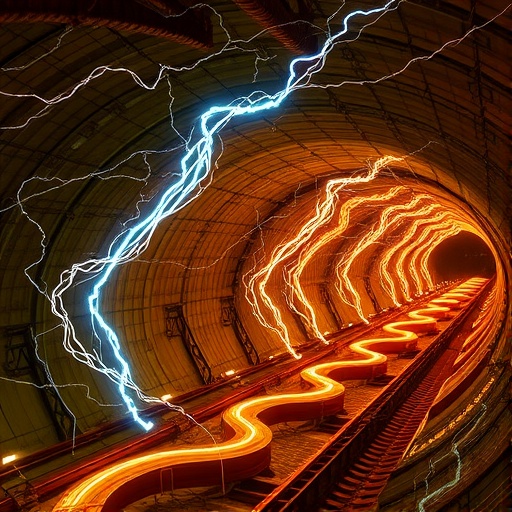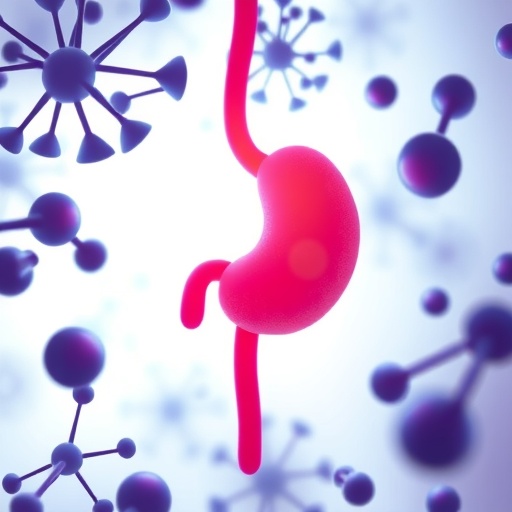Beneath the surface of the Earth lies a complex and dynamic world, invisible to the naked eye but vital to the health of ecosystems, water quality, and pollutant fate. At the heart of this subterranean realm is a myriad of electron transfer processes that shuttle charges across diverse geological and biological domains. Recent research, culminating in a comprehensive review published in Environmental and Biogeochemical Processes, reveals that these electron movements occur at scales far larger than previously recognized, spanning centimeters to meters. This discovery challenges long-held assumptions about redox reactions as strictly localized phenomena and opens exciting prospects for enhanced environmental remediation strategies.
For decades, scientists have understood redox reactions—the transfer of electrons between chemical species—as the cornerstone of environmental chemistry and microbial metabolism. These reactions facilitate nutrient cycling by mediating transformations of key elements like carbon, nitrogen, sulfur, and iron. Traditionally, it was believed that such electron exchanges happened only at microscale hotspots on mineral surfaces or within microbial consortia, essentially confined to the nanoscale. However, the new review synthesized by a collaborative team from the China University of Geosciences fundamentally reshapes this view by demonstrating how electron transfer (ET) can link distant chemical zones underground, effectively creating an integrated electron network across expanded spatial dimensions.
At the most basic level, ET involves direct electron exchange at interfaces where microbes meet minerals or where mineral surfaces interact with waterborne molecules. These interactions occur across nanometer distances. Yet emerging evidence indicates that natural conductive materials, along with specialized bacteria dubbed “cable bacteria,” serve as biological and geochemical conduits that facilitate electron passage over centimeters. Cable bacteria, with their filamentous structures, act as living electric wires embedding themselves in sediments and bridging oxic and anoxic zones by transporting electrons efficiently. Alongside these, minerals with inherent conductivity and organic molecules such as humic substances participate in forming extended electron transfer chains that span substantial underground distances, effectively acting as electron superhighways connecting otherwise isolated redox zones.
This broadened understanding of subsurface ET disrupts previous paradigms which believed redox processes were spatially restricted. Professor Songhu Yuan, the study’s corresponding author, underscores the transformative impact of these findings: “We now appreciate that redox chemistry in subsurface environments operates not merely in localized hotspots but as interconnected systems, where electron flow can couple reactions separated by centimeters or even meters.” Such connectivity means that microbial respiration and mineral oxidation/reduction can be spatially coordinated, impacting a wide range of biogeochemical processes and ultimately governing ecosystem functioning and pollutant dynamics.
One particularly exciting implication lies in environmental remediation efforts. Traditional approaches often rely on physically accessing contaminated zones—injecting chemicals or microbes directly to accelerate pollutant breakdown. Long-distance electron transfer, however, introduces the possibility of “remote remediation,” where contaminants buried in difficult-to-reach areas can be degraded indirectly. Conductive minerals or artificially introduced biochar enhance microbial electron activity and serve as electron conduits, promoting contaminant transformation from afar. Concurrently, cable bacteria enable redox coupling between sediment layers by transferring electrons upward or downward, thus influencing chemical gradients and potentially reducing the emission of harmful substances like sulfides.
The review also addresses the technical challenges hindering progress in this field. Current analytical approaches primarily capture electron interactions at the nanoscale or rely on indirect geochemical indicators at broader scales, leaving intermediate processes poorly understood. Developing sensitive, in situ methods to directly measure electron flows across multiple spatial scales is essential. Furthermore, integrating molecular-level insights with field-scale observations demands sophisticated modeling frameworks capable of simulating multiscale electron transfer dynamics. Such models must reconcile fast nanoscale reactions with slower macro-scale processes to predict emergent behavior and inform practical applications.
Interestingly, this new conceptual framework harbors transformative potential not only for pollution control but also for understanding natural nutrient cycling and ecosystem resilience. By treating the subsurface as an interconnected redox system—essentially Earth’s own electron grid—scientists can better predict how environmental disturbances or management practices alter fundamental elemental flows. This perspective may reveal novel insights into subsurface energy landscapes, microbial ecology, and feedback mechanisms governing greenhouse gas emissions, carbon sequestration, and water quality.
Co-author Dr. Yanting Zhang highlights the broader significance of these discoveries: “Understanding how electrons traverse underground environments equips us with powerful tools to decode complex subsurface chemistry and devise intelligent strategies for safeguarding groundwater and soil health.” This is particularly relevant as anthropogenic activities increase the burden of chemical pollutants and disrupt natural biogeochemical equilibria, underscoring the urgent need for innovative remediation technologies grounded in fundamental science.
Moreover, the interplay between biologically mediated electron transport and geochemical matrices emphasizes the deep integration of life and Earth systems. The unique properties of cable bacteria and conductive minerals exemplify nature’s capacity to engineer intricate electron networks, demonstrating an elegant convergence of microbiology, chemistry, and geology. Harnessing these natural electron pathways could inspire biomimetic or bioengineered solutions, potentially revolutionizing environmental technologies and sustainability practices.
The authors envision an exciting research frontier characterized by multidisciplinary collaboration and technological innovation. Combining advanced imaging techniques, electrochemical sensors, molecular biology, and computational models will be pivotal to unraveling the complexity of subsurface ET. Further exploration of microbial electroactivity, electron conduit synthesis, and dynamic redox coupling promises to deepen our mastery over environmental processes and pollution mitigation.
In essence, this synthesis of multiscale electron transfer processes redefines the subterranean landscape as a vibrant, interconnected network powered by electron fluxes bridging scales from nanometers to meters. Recognizing and leveraging these pathways may enable tomorrow’s environmental engineers to seamlessly plug into Earth’s natural electron grid—a profound leap toward restoring contaminated soils and aquifers with precision and efficacy. As we unlock these hidden electron corridors beneath our feet, we forge new pathways for sustaining ecosystem integrity and environmental health in an increasingly challenged world.
The revelation that electron transfer is not confined to microscopic hotspots but spans extensive distances challenges us to rethink environmental chemistry fundamentally. With continued research and technological advancement, harnessing the power of underground electron flows could underpin the next generation of sustainable resource management and pollution remediation strategies—a true testament to the interplay of nature’s complexity and human ingenuity.
Subject of Research: Not applicable
Article Title: Different scales of electron transfer processes in the subsurface
News Publication Date: 12-Sep-2025
Web References:
Environmental and Biogeochemical Processes Journal
DOI: 10.48130/ebp-0025-0003
References:
Zhang Y, Tong M, Zhang P, Kappler A, Yuan S. 2025. Different scales of electron transfer processes in the subsurface. Environmental and Biogeochemical Processes 1: e002.
Image Credits:
Yanting Zhang, Man Tong, Peng Zhang, Andreas Kappler & Songhu Yuan
Keywords
Electron transfer, Redox reactions, Environmental remediation
Tags: complex underground chemical networkscomprehensive review on underground chemistryelectron transfer in pollutant fateelectron transfer processes in geologyinnovative environmental biogeochemistrylarge-scale electron exchangesmicrobial metabolism and nutrient cyclingpollution remediation strategiesredox reactions in environmental chemistrysubsurface chemical interactionssubterranean ecosystems and water qualityunderground electron highways






